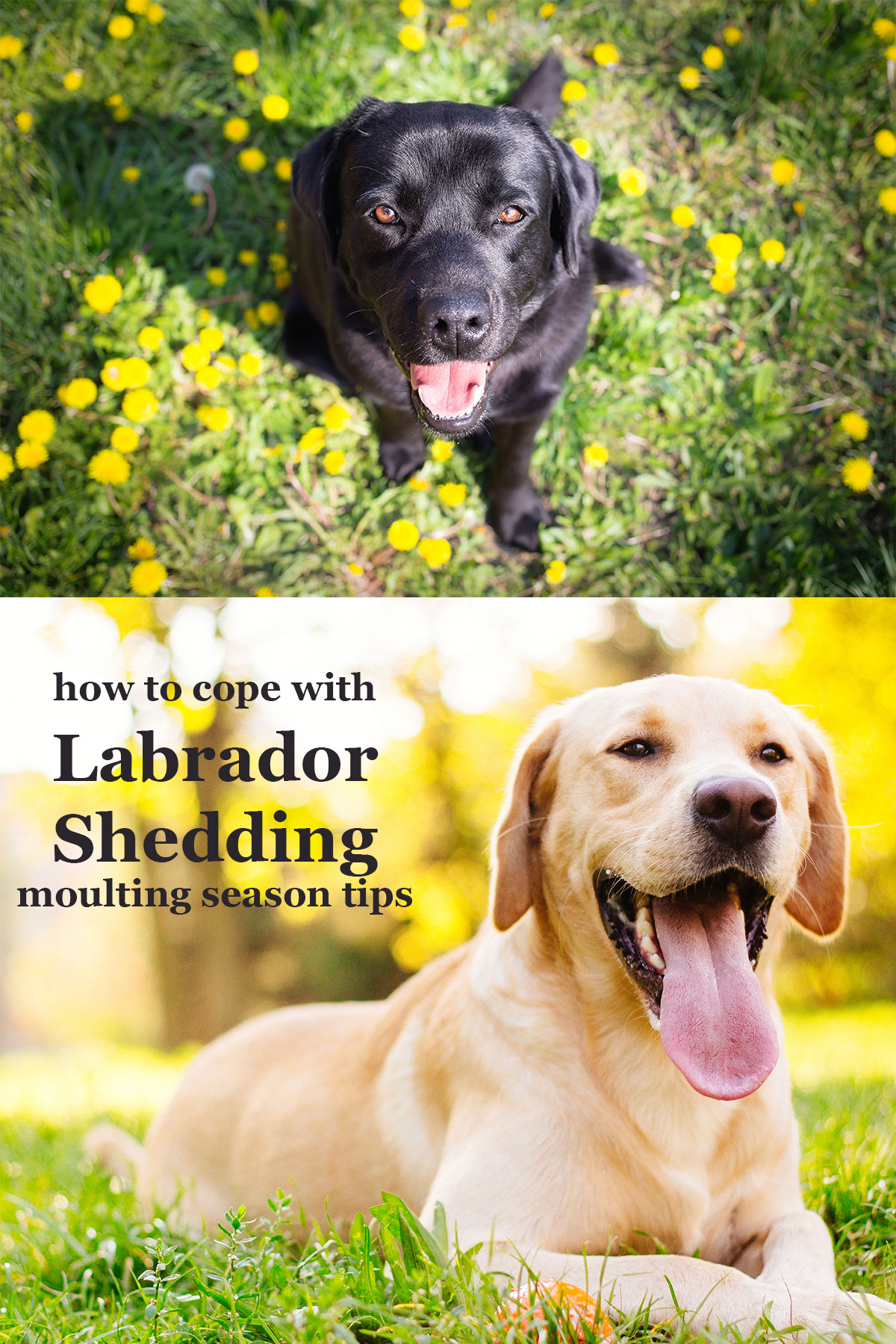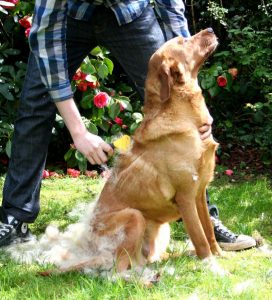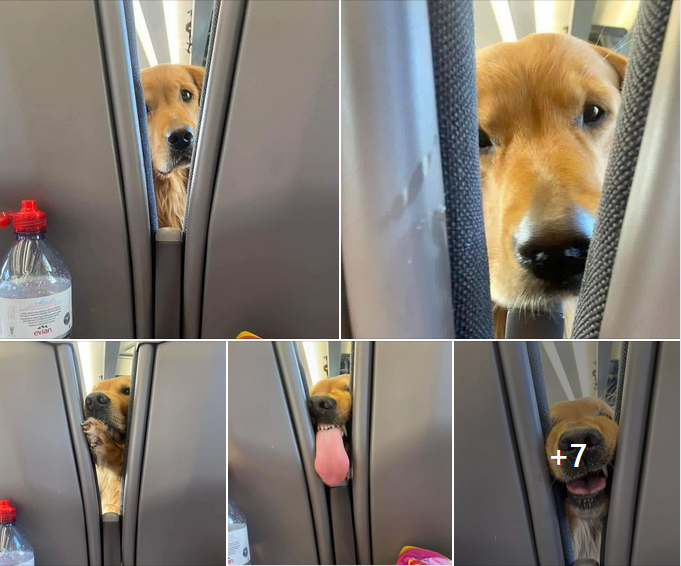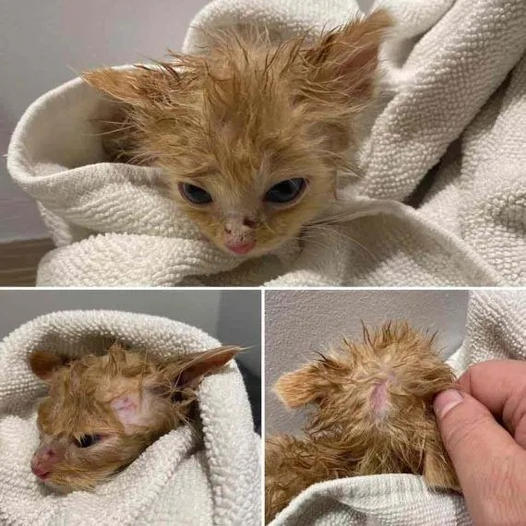Labradors have a tendency to shed a lot, especially during seasonal changes. However, managing your Labrador’s shedding can be more manageable than you think if you have the right tools, a proper method, and a consistent routine in place. There’s no need for clippers or scissors for grooming! I make sure to brush my Labs once a week using a slicker or pin brush, and I give them a thorough grooming with a deshedding tool a few times a year when they shed their coats heavily. It’s quite a sight to see all the excess fur that comes off, which I then leave out for the birds to use in their nests! If you’re wondering why Labradors shed so much or if certain colors shed more than others, it’s important to understand the grooming needs of your dog. Establishing a regular grooming routine and keeping your home free of fur can help you manage Labrador shedding more effectively. Having the right tools at hand can truly make a difference in dealing with your furry companion’s shedding.
Reasons Why Dogs Shed Many wild animals, particularly those in regions with distinct seasons, experience a shedding process twice a year, known as a ‘moult.’ This typically occurs in spring and again before winter sets in. During the spring moult, animals shed their thick winter fur to make way for a sleek summer coat. As temperatures drop, the summer coat is shed to make room for a thick, warm winter coat. In some cases, the winter fur may even have a different color to help the animal blend in with its winter surroundings, like arctic hares and foxes. Shedding allows animals to adapt their coat to the changing seasons. While dogs no longer need camouflage and often live in controlled environments with stable temperatures, shedding still occurs in most breeds due to their evolutionary history. Do Labrador Retrievers Shed Constantly? For those familiar with Labrador Retrievers, the answer to this question is likely a knowing nod. If you’re new to the world of Labs, be aware that all Labs shed some hair most of the time – it’s a reality you’ll need to accept.

Why is my Labrador shedding so much hair? It seems like a never-ending cycle of vacuuming and finding hair everywhere. Labradors have a unique double coat that includes a dense undercoat designed to keep them warm while swimming. This is great for them but not so great for your furniture and clothes. Do Labradors of different colors shed more than others? While there is no definitive answer, it’s likely that all Labradors shed regardless of their color. Whether you have a black, yellow, or chocolate Labrador, shedding is just a part of owning this breed. Dealing with Labrador shedding can be a challenge, but there are some practical tips you can follow. Daily grooming is essential during shedding season to help reduce the amount of hair in your home. Tools like the zoom groom can help effectively remove dead undercoat and minimize shedding. While there’s no magic solution to stop your Labrador from shedding, taking steps to groom regularly and vacuum frequently can help manage the issue. Embrace the shedding as a natural process and remember that it’s all part of owning a Labrador.

The Zoom Groom is great for Labradors, but it may not get all the hair. To tackle this issue, I rely on a more controversial tool to keep my house hair-free – the Furminator.

The effectiveness of this tool on your dog will likely vary depending on their unique coat. Labradors can have different shedding patterns and coat thickness. Take Tess, for example, a four-year-old Labrador whose new coat grows in as the old one sheds. Using a Furminator for grooming has never caused any harm to her coat or revealed bare skin, just removing soft, dead undercoat. It’s amazing how much undercoat can be removed, and not only does Tess feel better, but my carpets do too.

Introducing the Furminator, a grooming tool that I personally use and adore. While some people are not fans of this device, claiming it can damage the coat, it may not be suitable for all dogs. For instance, my friend’s elderly chocolate lab sheds a lot of old hair before growing new fur, making the Furminator too harsh for her delicate skin. It’s important to use this tool carefully and gradually to avoid bald patches or thinning the coat. Furminators can be a bit polarizing, either you love them or hate them. Personally, I find them to be a game-changer for managing my dogs and keeping my home fur-free. Remember, it’s vital to use caution with this powerful tool and not overdo it. When it comes to shaving your Labrador, the answer is a firm no. Shaving can lead to sunburn, temperature regulation issues, and increased vulnerability to injuries. After grooming your dog, it’s time to tackle the hair in your home. I highly recommend using a handheld Dyson vacuum, which does a fantastic job of sucking up dog hair from carpets and furniture with its bagless technology. Keeping your home hair-free will not only make it more comfortable for you but also for your furry friend.

Even though my dogs are forbidden from going upstairs, their hair always finds its way up there! That’s why I rely on my trusty robot vacuum cleaner to roam around each morning for an hour, picking up those pesky pet hairs that seem to drift everywhere in the house.

After my old robotic vacuum cleaner stopped working, I decided to upgrade to a new and improved model – the Neato Botvac. I’m so impressed with its performance that I ended up purchasing a second one for my home, ensuring that both upstairs and downstairs floors are cleaned thoroughly every morning. With a larger dustpan and superior cleaning abilities compared to my old vacuum, this new model has exceeded my expectations. For optimal results, I recommend giving your floors a thorough vacuuming with a traditional cleaner before letting your robot take over. By setting the robot to run daily, you’ll be amazed at how much dust and dirt it picks up, leaving the dustbox with plenty of space to spare. The battery life on my Neato Botvac lasts around an hour and a half, which is more than enough time to cover the entire living space before needing a recharge. Please note that some links in this article are affiliate links, meaning we may earn a small commission if you make a purchase through them. Rest assured that we have independently selected and tested these products, and all opinions shared in this article are genuine and based on our own experiences.




